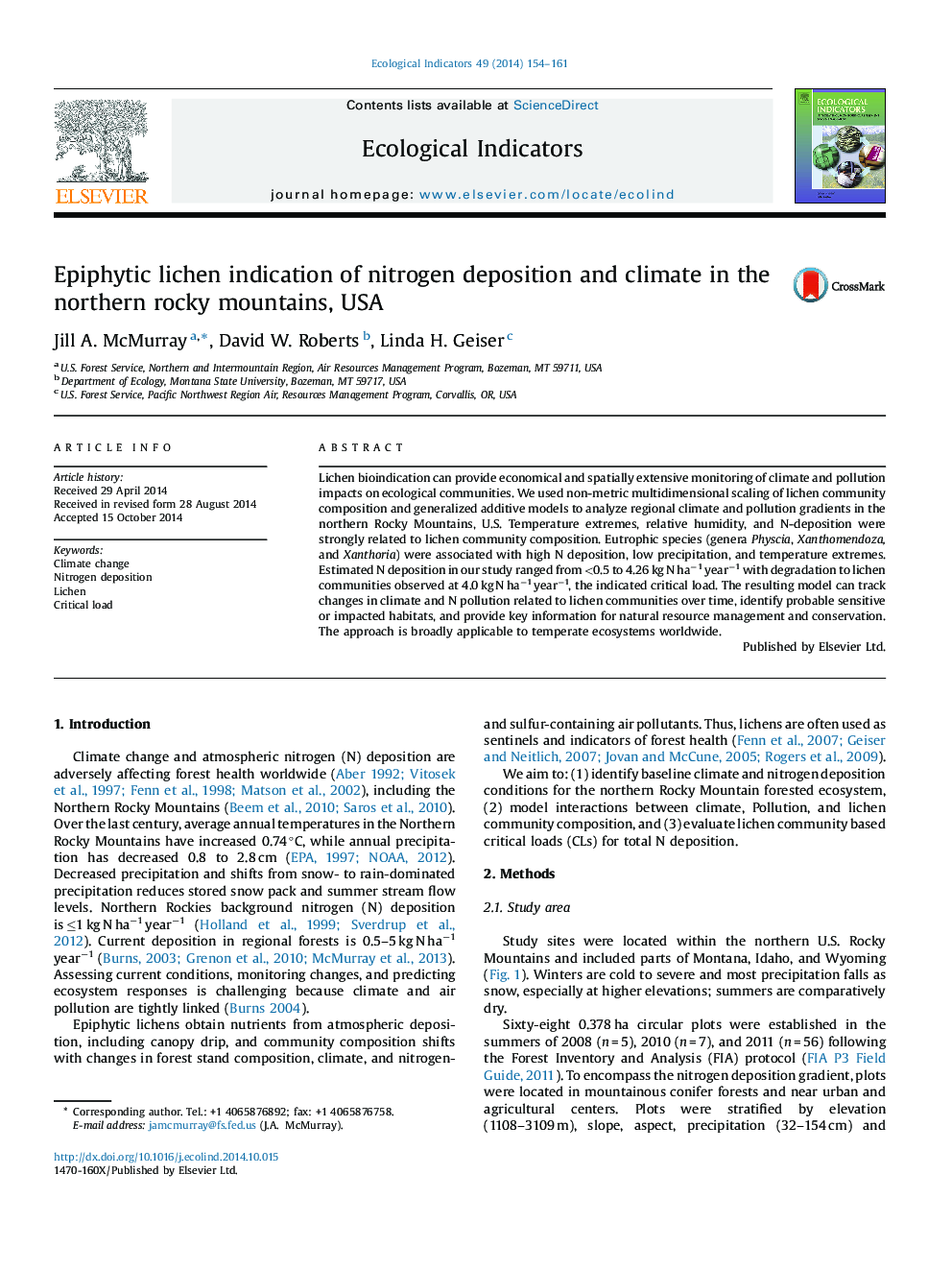| Article ID | Journal | Published Year | Pages | File Type |
|---|---|---|---|---|
| 6294802 | Ecological Indicators | 2015 | 8 Pages |
Abstract
Lichen bioindication can provide economical and spatially extensive monitoring of climate and pollution impacts on ecological communities. We used non-metric multidimensional scaling of lichen community composition and generalized additive models to analyze regional climate and pollution gradients in the northern Rocky Mountains, U.S. Temperature extremes, relative humidity, and N-deposition were strongly related to lichen community composition. Eutrophic species (genera Physcia, Xanthomendoza, and Xanthoria) were associated with high N deposition, low precipitation, and temperature extremes. Estimated N deposition in our study ranged from <0.5 to 4.26 kg N haâ1 yearâ1 with degradation to lichen communities observed at 4.0 kg N haâ1 yearâ1, the indicated critical load. The resulting model can track changes in climate and N pollution related to lichen communities over time, identify probable sensitive or impacted habitats, and provide key information for natural resource management and conservation. The approach is broadly applicable to temperate ecosystems worldwide.
Related Topics
Life Sciences
Agricultural and Biological Sciences
Ecology, Evolution, Behavior and Systematics
Authors
Jill A. McMurray, David W. Roberts, Linda H. Geiser,
